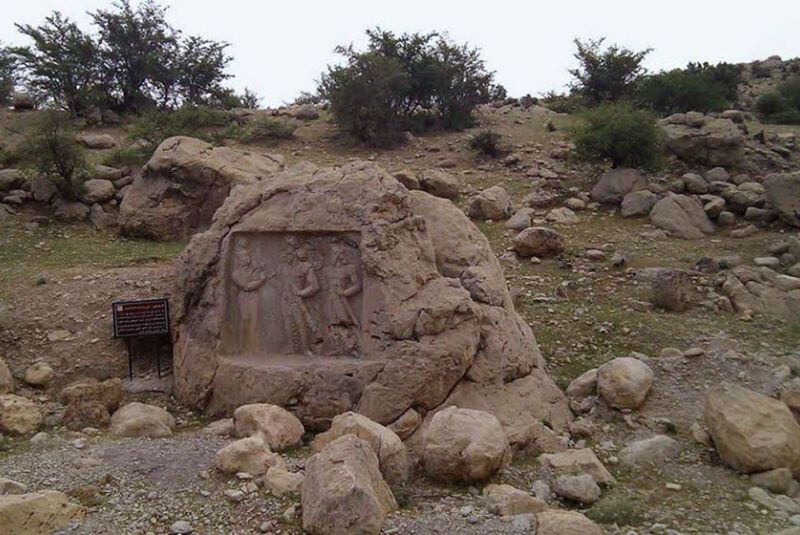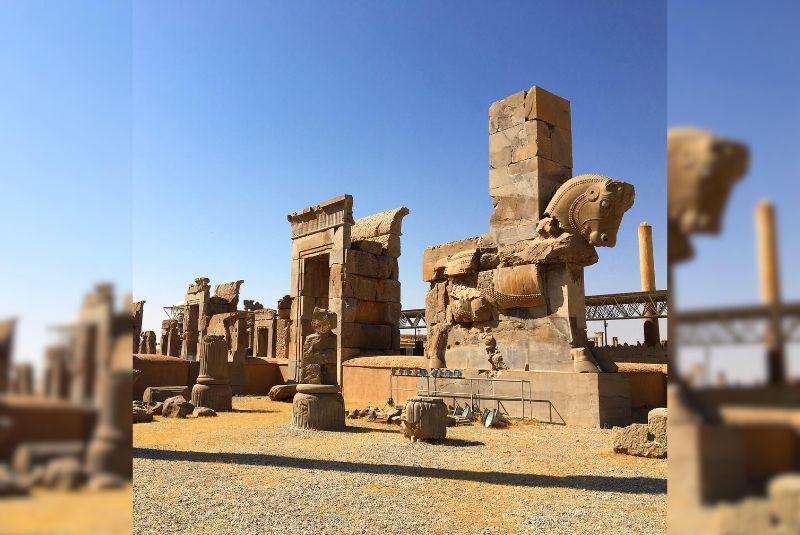Sarab-e Qandil | Natural Wonders of Fars, Iran
Sarab-e Qandil is a captivating blend of natural beauty and historical significance in Fars province, Iran.
Known for its tranquil springs and stunning landscape, this area offers travelers a peaceful escape from the bustling cities of Iran. The serene environment is complemented by rich historical relics, making it a must-visit for those who appreciate both nature and culture. Located within close proximity to Shiraz, one of Iran’s most culturally rich cities, Sarab-e Qandil is an ideal stop for visitors exploring Fars Province.
For those seeking an experience beyond traditional tourist spots, Sarab-e Qandil provides a unique opportunity to immerse in the landscapes that have shaped Iranian history. Travelers can enjoy not only its scenic beauty but also its connection to ancient Persia. Its proximity to iconic historical sites like Persepolis and Pasargadae adds to its appeal, making it a valuable part of any itinerary through this historically significant region.
Historical Significance of Sarab-e Qandil

Sarab-e Qandil has been a site of importance for centuries, with its roots tracing back to ancient Persia. The area’s most significant historical feature is the Tange Qandil Rock Relief, a remnant of the Sassanid era, which highlights the region’s connection to one of the greatest Persian empires. Carved into the mountainside, this rock relief showcases scenes from Sassanid life and governance, offering valuable insights into the era’s social and political dynamics.
In addition to the Tange Qandil relief, the surrounding area has yielded numerous archaeological discoveries, further solidifying its status as a historically rich location. These findings reveal that the region was not only a natural retreat but also a place of strategic and cultural importance for ancient civilizations.
The Sassanid history associated with the site allows visitors to appreciate the depth of ancient Persia’s cultural and political legacy. Unlike many other historical sites, Sarab-e Qandil offers a quieter and less commercialized look into the ancient world, making it a destination for those who want to experience ancient Persia in a more intimate setting. Its historical layers continue to attract both researchers and tourists fascinated by Iran’s past.
Geographical and Natural Features
Sarab-e Qandil is located in the southwestern region of Fars Province, nestled within a landscape defined by rugged mountains and rolling valleys. The area’s topography is shaped by its location at the foothills of the Zagros Mountains, making it a scenic spot that contrasts sharply with the arid surroundings typical of the broader Fars region. This geographical diversity gives Sarab-e Qandil its distinct natural beauty, combining rocky terrain with pockets of green spaces.
At the heart of the region’s natural appeal are the natural springs that have long sustained both wildlife and human settlements. These springs are a vital resource in the otherwise dry climate of Fars, providing fresh water and fostering an ecosystem where various plants and animals thrive. The water from these springs supports a diverse range of flora, including shrubs and small trees, contributing to the area’s green cover.
In terms of biodiversity, the region is home to several species of birds, mammals, and reptiles. Conservation efforts are crucial to preserving this ecosystem, as it remains one of the few natural oases in the province. The natural environment, with its serene springs and mountain backdrop, provides a peaceful setting that draws visitors to experience the tranquility of Sarab-e Qandil.
Things to Do and See at Sarab-e Qandil

Sarab-e Qandil offers a range of activities for tourists looking to engage with both nature and history. One of the most popular activities is hiking, with trails that take visitors through the rocky landscape, offering stunning views of the surrounding mountains and valleys. The area's diverse terrain makes it an excellent destination for both beginner and experienced hikers. For photography enthusiasts, the striking contrast between the springs and the arid landscape creates ideal conditions for capturing the natural beauty of the region.
Bird-watching is another activity that attracts nature lovers to Sarab-e Qandil, as the area is home to a variety of bird species that thrive around the natural springs. Additionally, visitors can explore the cultural aspects of the region by visiting the Tange Qandil Rock Relief, a historical site that provides insight into the Sassanid era. The rock carvings and nearby archaeological findings offer a deeper understanding of the ancient Persian civilization, making this a valuable stop for those interested in history.

During certain times of the year, local tribes host seasonal events or festivals in the region, providing visitors with an opportunity to experience traditional music, dance, and local cuisine. Travelers planning a trip to Sarab-e Qandil should aim to visit during the cooler months of spring and autumn, when the weather is more pleasant for outdoor activities. It's recommended to bring comfortable hiking gear, plenty of water, and a camera to capture the scenic landscape. A two-day trip is ideal for exploring both the natural and historical elements of Fars tourism.
Sarab-e Qandil Location and Access
Sarab-e Qandil is located in Fars Province, within a reasonable distance from the major city of Shiraz, making it accessible by road. Shiraz is about 120 kilometers away and serves as the primary gateway for travelers heading to Sarab-e Qandil. The most convenient way to reach the area is by car, either through a rental vehicle or hiring a private taxi. From Shiraz, take the Shiraz-Isfahan Road (Route 65) and follow the signs leading to Eqlid. The route offers scenic views of the countryside, and the road conditions are generally good. Public transportation options like buses may take longer, so driving or booking a private tour is recommended.
Accommodation
While Sarab-e Qandil itself is relatively remote, there are several accommodation options in nearby towns and villages. Eco-lodges are popular in the region, offering a more immersive experience of rural life and nature. For those seeking more comfort, there are hotels in Shiraz and Eqlid, both of which provide a variety of options from budget to mid-range stays. Alternatively, if you're looking for an outdoor experience, there are designated areas for camping near the springs, allowing you to fully enjoy the natural surroundings.
Facilities and Accessibility
Facilities in the Sarab-e Qandil area are limited, so travelers should plan accordingly. Basic amenities like restrooms are available, but it's advisable to carry your own snacks and drinking water, as food options may be scarce. The area is accessible for most visitors, but those with mobility challenges should be aware that some of the hiking trails are rocky and uneven.
Safety Tips
Given the remote nature of Sarab-e Qandil, it's essential to come prepared. Weather can fluctuate, especially in the colder months, so dress in layers and check the forecast before your visit. Carry ample water to stay hydrated, as the springs may be far from your hiking route. Additionally, be mindful of local wildlife and avoid leaving food unattended to prevent attracting animals. Always inform someone of your travel plans if exploring alone.
Nearby Attractions to Visit

Sarab-e Qandil's location in Fars Province makes it an ideal starting point for exploring some of Iran's most significant historical and natural landmarks. Adding nearby attractions to your itinerary can greatly enhance the depth and diversity of your travel experience:
- Persepolis (40-minute drive): Known as one of Iran’s most iconic archaeological sites, Persepolis was the ceremonial capital of the Achaemenid Empire. Its vast complex of ruins, including grand palaces and intricate stone carvings, offers a powerful reminder of Persia’s ancient history. A visit to Persepolis is an essential stop for anyone traveling in Fars Province, as it showcases the architectural and cultural achievements of the Achaemenid dynasty.
- Pasargadae (1-hour drive): A short drive from Sarab-e Qandil, Pasargadae is home to the Tomb of Cyrus the Great, a UNESCO World Heritage Site. As the first capital of the Achaemenid Empire, this site represents the origins of Persian civilization. The serene atmosphere around Cyrus' tomb and the surrounding ruins makes Pasargadae a must-visit for history enthusiasts.
- Naqsh-e Rostam (1-hour drive): This ancient necropolis, located near Persepolis, features impressive rock-cut tombs of Persian kings and intricate reliefs depicting royal and religious scenes. Visiting Naqsh-e Rostam offers travelers a chance to witness the grandeur of Persia’s royal past in an awe-inspiring setting.
- Qal'eh Dokhtar (The Maiden’s Castle) (Close proximity): Built by Ardashir I, founder of the Sassanid Empire, Qal'eh Dokhtar is an ancient fortress perched on a mountain slope. Its elevated position provides breathtaking views of the surrounding landscape, offering both a historical and natural attraction in close proximity to Sarab-e Qandil.
- Tang-e Chogan (A short drive): A picturesque valley with a flowing river, Tang-e Chogan is a popular destination for hikers and nature lovers. The area is also home to several ancient rock reliefs, similar to those found in Tange Qandil, depicting the history of the Sassanid Empire. The peaceful surroundings make Tang-e Chogan a relaxing spot to explore after visiting the historical sites.
Final Takeaway
For anyone planning a trip to Iran, Sarab-e Qandil offers a peaceful and enriching experience that complements the more well-known attractions in the region. It’s an excellent addition to any itinerary focused on exploring Iran’s diverse landscapes and ancient history, and it’s sure to leave a lasting impression.
Share your story!
Comment below and let us know about your Experience.
Your story inspires others!


Comment
Leave a Comment